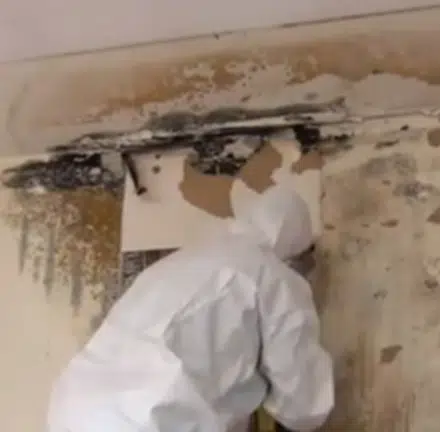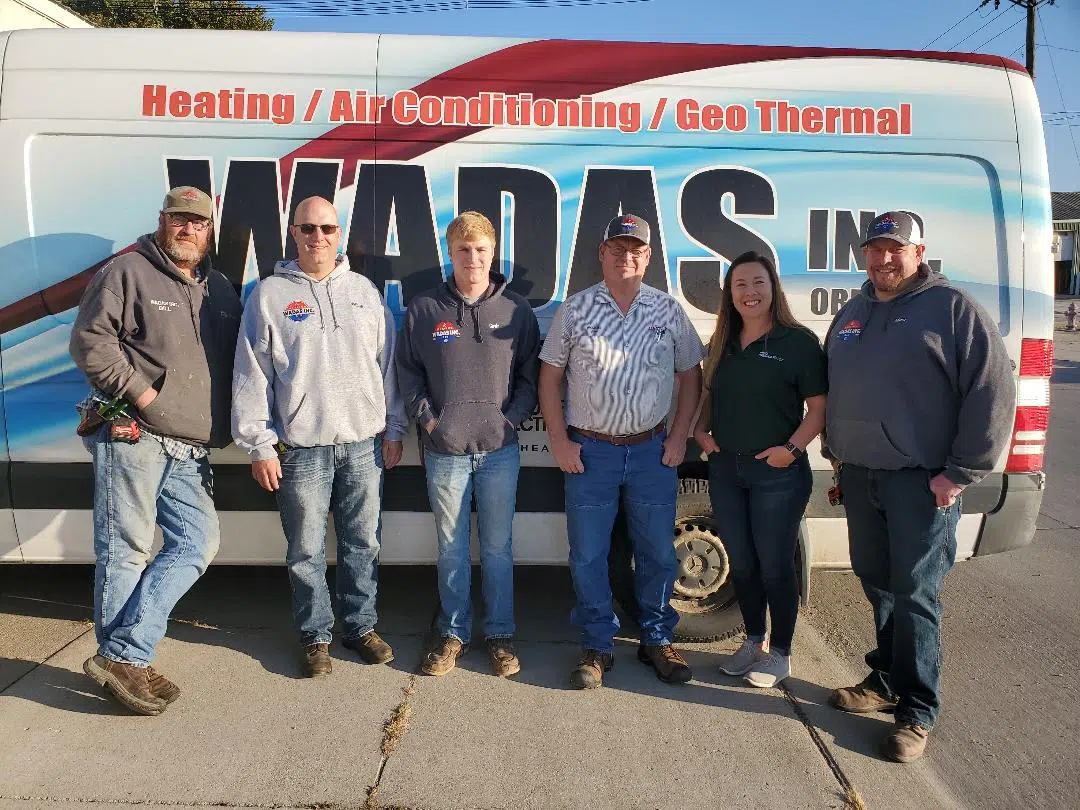
Courtesy/Indoor Mold - Wikipedia
Fungicidal Disinfectants Best Option for Complete Removal
Organizations affiliated with the Nebraska Voluntary Organizations Active in Disaster (NEVOAD), such as Great Plains United Methodist, Southern Baptist and Team Rubicon, have been working for weeks to clear out mud, debris and flood damaged materials in affected homes. These groups advocate using proper cleaning materials and techniques for effective mold removal.
“We want to give homeowners a clean place to start rebuilding their lives,” says Darrell Cumpton of Kansas-Nebraska Southern Baptist Relief.
Mold is a common problem after flooding and can cause serious health issues for people living in proximity to it, according to the St. Bernard Project Mold Remediation Guide which is available online at http://sbpusa.org/public/uploads/pdfs/SBP_MoldRemediationGuide_20180927.pdf. Molds are naturally occurring species of fungus that grows best in warm, damp conditions – conditions exactly like those commonly found in flooded homes. Mold reproduces by means of tiny spores that can float through the air and are typically green or black in color. Molds have tiny branches and roots, so they grow both on top of and into materials like wood.
A fungicide and wire brushes are needed to remove mold.
In Nebraska, fungicidal disinfectant can be obtained free of charge for flood clean up at:
- Fremont Mall, 860 E. 23rd St., Fremont, (between Nebraska Sport and Gordmans), Mon-Sat 9 a.m. to 5 p.m. and Sunday 1 to 5 p.m.
- LifeSpring Church 13904 S. 36th St., Bellevue. Mon-Sat 8AM to 5PM and Sunday 1 to 5 p.m.
Homeowners still in need of clean-up assistance can call the Crisis Clean Up Hotline at 833-556-2476. In addition, homeowners can find more information at: http://www.heartlandchurchnetwork.com/flood-relief.html
“Improper cleaning can result in mold resurfacing after the homeowner has spent a great deal of time and money to rebuild, said Mark Coffin of Omaha Habitat for Humanity. “We don’t want people to have to tear out drywall a second time.”
According to Coffin, mold must be effectively cleared before rebuilding can begin. Representatives of NEVOAD recommend the following mold removal tips:
- Use an Environmental Protection Agency (EPA) registered fungicide for mold remediation.Fungicides are cleaning agents specifically intended for killing mold and other fungi, both on and below the surface of contaminated materials. Mold remediation formulas are also designed to help prevent future mold growth. Common brands are Concrobium Mold Control and Fiberlock Shockwave.
- Bleach is NOT effective for mold remediation because it cannot clean below the surface of porous or semi-porous materials like wood. Because it cannot kill mold roots, mold can and will regrow. While bleach is convenient as a cleaner and stain remover for hard, non-porous items, it has distinct drawbacks when cleaning flood impacted buildings. Many types of bleach are not EPA-registered as a disinfectant. Further, its effectiveness in killing bacteria and mold is significantly reduced when it comes in contact with residual dirt, which is often present in flooded homes. Also, if bleach water comes into contact with electrical components and other metal parts of mechanical systems it can cause corrosion. Bleach water can also compromise the effectiveness of termite treatments in the soil surrounding the building.
- Use a wire brush to scrub all wood surfaces in multiple directions–up and down, side to side, circularly and diagonally. This helps remove mold and open up wood fibers for fungicide penetration.
- Fold shop towels into sixths to prep for wiping down. Use a permanent marker to mark an “X” on the stud once fully scrubbed to track work progress. Apply fungicide to all wood marked with an “X” according to product instructions (when recommended, spray application is often easiest). Wipe down sprayed areas with a shop towel. Flip towel to a different clean face each time it becomes dirty; once all towel faces have been used, discard and replace with a new, clean towel Do not re-use dirty towels or re-dip dirty towels into fungicide. When stud is wiped down on all sides, circle the “X” with permanent marker.
“A pressure-wash with a 3000 psi pressure washer is the fastest, most efficient way to do the manual cleaning step,” Cumpton said. “Then, push excess water to the drain or sump pump. Apply sanitizer while wood is still wet.”
Do not restore drywall until all materials have dried completely. Drying of all affected areas is necessary before restoration. More information can be found in the Texas A&M Extension article, “Controlling Mold Growth After the Storm” at https://texashelp.tamu.edu/controlling-mold-growth-after-the-storm/
A moisture meter can be used to test the moisture content of studs and sheathing before replacing insulation. Wood products specialists recommend that wood have no more than 14 to 15 percent moisture by weight before closing a wall.
















